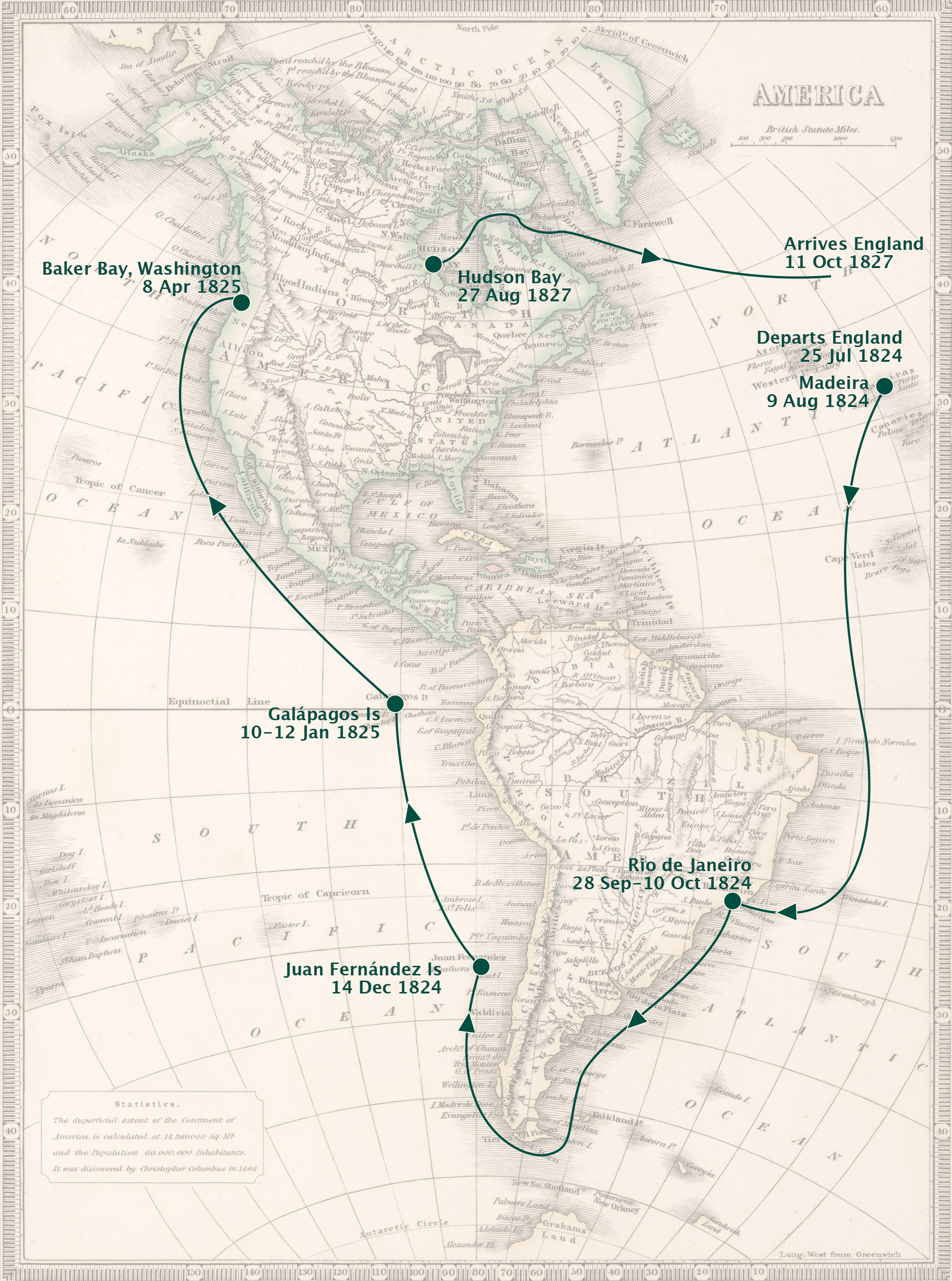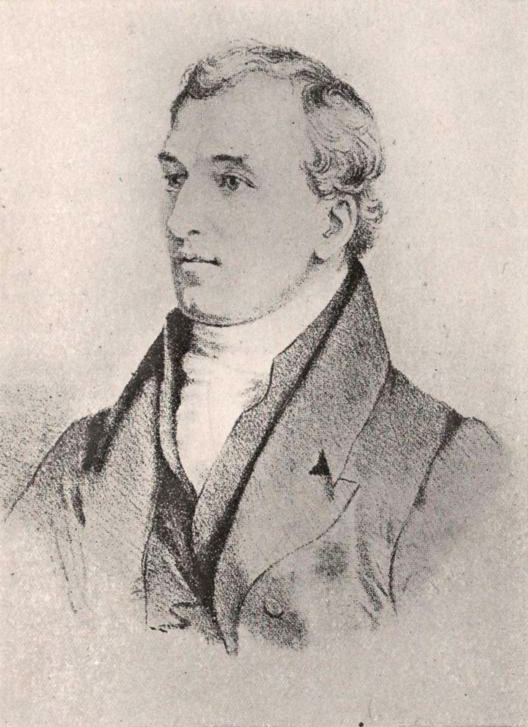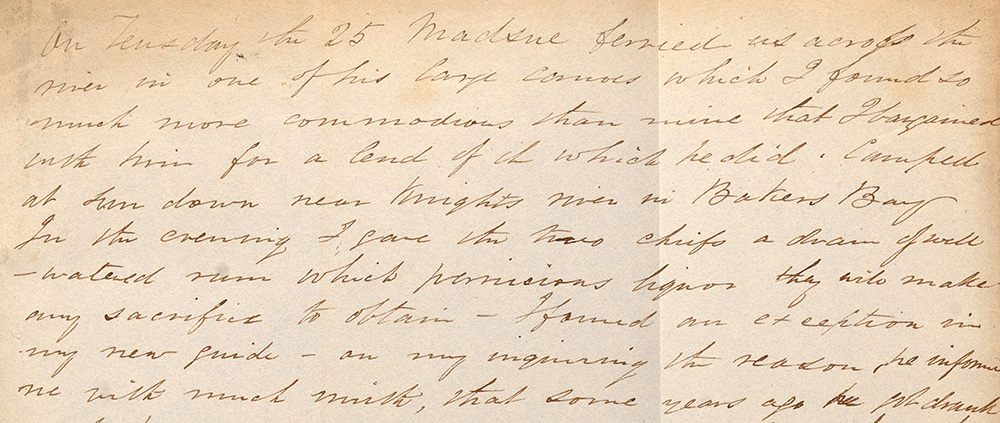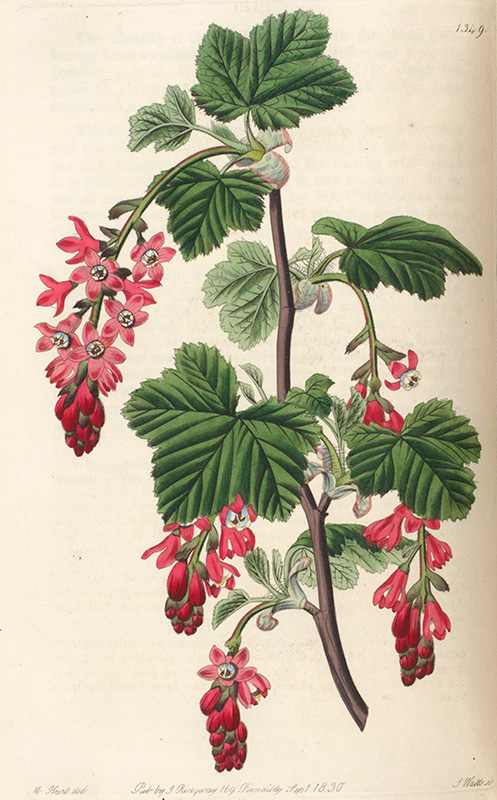Insights into our collections
RHS Plant Collector Archive: David Douglas
Scottish botanist David Douglas was the Horticultural Society’s fifth plant collector, and made two trips to the Americas on behalf of the Society.
Who was David Douglas?
Born in Perthshire in 1799, the second son of a stonemason, Douglas was a Scottish botanist who became the Horticultural Society’s fifth plant collector in 1823. After finishing school Douglas spent seven years working as an apprentice to the head gardener of Scone Palace in Perth, Scotland. Douglas went on to work in the University of Glasgow’s Botanic Gardens. His knowledge impressed the botanic gardens' Director and Professor of Botany, William Jackson Hooker, who recommended him to the RHS.
Portrait of Douglas from David Douglas, botanist at Hawaii [compiled by W. F. Wilson]
Where did David Douglas collect plants from?
Douglas made two trips to the Americas for the Horticultural Society. He departed on his first trip from Liverpool in June 1823. He spent five months travelling around New York state, Pennsylvania, and Ontario in Canada, before returning to London in January 1824. Douglas left England for his second trip in July 1824. This trip took him to Brazil, Chile, and the Galápagos Islands, before arriving in Washington in April 1825. Douglas then spent two years travelling around the North American interior, before departing from Hudson Bay for England in August 1827.

Map of the route of Douglas' second expedition to the Americas, 1824-1827.
Douglas embarked on a third trip to the Americas in 1829, which the Society contributed to financially (in the form of an annual salary of £120) but did not organise. He died under tragic circumstances in Hawaii in 1834, when he was mauled to death after falling into a bear pit.
How did David Douglas collect plants?
On his first expedition, Douglas was mostly guided by Usonians (North American people of European descent) as he followed the networks of fur traders. His second expedition depended heavily upon Indigenous people, who acted as interpreters, negotiators, labourers, and guards, helping him to navigate transport routes that were not yet well known to Europeans. These people generally go unnamed and unmentioned, but Douglas gives a notably detailed and relatively friendly account of Chinook chief Tha-a-muxi, who guided Douglas from his brother chief Madsue (Comcomly)’s lodge at the mouth of the Columbia River, to his own home in what is now Gray’s Harbor.
Douglas frequently relied on local collectors to find seeds and plants for him, paying them with items such as tobacco, beads and weapons. Douglas would sometimes make drawings of plants to communicate to locals what plant he was looking for. On several occasions he describes gathering plants or seeds without permission and being challenged by local people.
Douglas also relied on his companions to provide food and shelter and frequently ate and slept alongside them. Despite being in the near constant company of others, Douglas described his experiences as lonely and frustrating, perhaps because he knew little of the languages of those he travelled with and often perceived them as less “civilised” than himself.
What plants did David Douglas collect?
Although he is best known for introducing conifers into England (the Douglas fir is named after him), Douglas introduced many other plants from across the Atlantic. His second expedition alone led to the introduction of over 200 plant species to Europe, many of which were named after him, such as Limnanthes douglasii and Solanum douglasii.
What’s in David Douglas’ papers?
David Douglas’ papers include journals, correspondence, and plant notes relating to his first and second expeditions. The papers also include correspondence relating to arrangements for his third expedition.
This Insight draws upon research carried out by Dr Sarah Easterby-Smith and Dr Elena Romero-Passerin (University of St Andrews) in 2021-2022, commissioned by the RHS.
Discover more
Published
9 May 2025
Insight type
Short read



